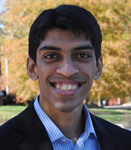
Not Training: Educating Health Workers in the 21st Century
 “We don’t train health workers. We train dogs. We educate health workers,” said David Gordon, visiting professor at the World Federation for Medical Education, to participants at the World Health Organization (WHO)/ PEPFAR consultation meeting on the transformative scale-up of medical, nursing, and midwifery education.
“We don’t train health workers. We train dogs. We educate health workers,” said David Gordon, visiting professor at the World Federation for Medical Education, to participants at the World Health Organization (WHO)/ PEPFAR consultation meeting on the transformative scale-up of medical, nursing, and midwifery education.
Held in Geneva in December, this high-level consultation brought together global, country, and institutional leaders from both the health worker education and health sectors in order to develop an opinion base and engage stakeholders for cooperative success.
Transformative scale-up
While the guidelines on transformative scale-up are still being written, this new concept recognizes two paradigms.
First, the implication of the term “scale-up.” Simply put, the world just does not have a sufficient number of health workers to meet our health care needs, and going by current trends, we would fall woefully short of the number required to approximate the Millennium Development Goals by 2015.
Second, the transformation of current approaches to health worker education. Having decided that the “business as usual” approach will not produce the number or type of health workers we need, the participants largely agreed that we need to seriously reexamine the way health workers are educated. In light of the recent reports, Health professionals for a new century: Transforming education to strengthen health systems in an interdependent world and Medical schools in sub-Saharan Africa, this position stood firmly vindicated.
The discussion around transformative scale-up included breaking down educational barriers between the different cadres—reduction of the so-called “tribalism” among health workers—and the need to integrate innovations to improve health education methodologies.
Engaging multiple perspectives
T he advantage of a consultation of this kind is that it brings together ministers of health, school administrators, academicians, and donors for a comprehensive view of the medical, nursing, and midwifery educations systems coming together. (Though unfortunately, no students—whose perspectives could be important pieces to understanding education systems—were present.) In addition, representatives of ministries of health and educational institutions from around the world presented their countries’ approaches toward solving the health workforce crisis.
he advantage of a consultation of this kind is that it brings together ministers of health, school administrators, academicians, and donors for a comprehensive view of the medical, nursing, and midwifery educations systems coming together. (Though unfortunately, no students—whose perspectives could be important pieces to understanding education systems—were present.) In addition, representatives of ministries of health and educational institutions from around the world presented their countries’ approaches toward solving the health workforce crisis.
Participants discussed how we need to educate not only increased numbers of health workers, but a different breed of health workers who:
- Have the skills to deliver quality health care
- Are relevant at the community level and tend to remain within the community
- See themselves as part of the larger health system.
The road ahead
Having been on the receiving end of a medical education not too long ago, I was extremely grateful to have the opportunity to participate in this event that sought to bring health worker education into the 21st century. In the coming months, WHO and PEPFAR will develop a set of guidelines that involve good practices and successful innovations that embody the spirit of transformative scale-up of health worker education
These guidelines will bear upon the implementation of the Medical Education Partnership and Nursing Education Partnership Initiatives—in which CapacityPlus will be involved over the next several years. It is hoped that this will help create the new-age health workforce that the world so desperately requires.
Photo 1 by Jennifer Solomon. (Shaun Noronha)
Photo 2 by Trevor Snapp. (Gao Nursing School students, Gao, Mali)


